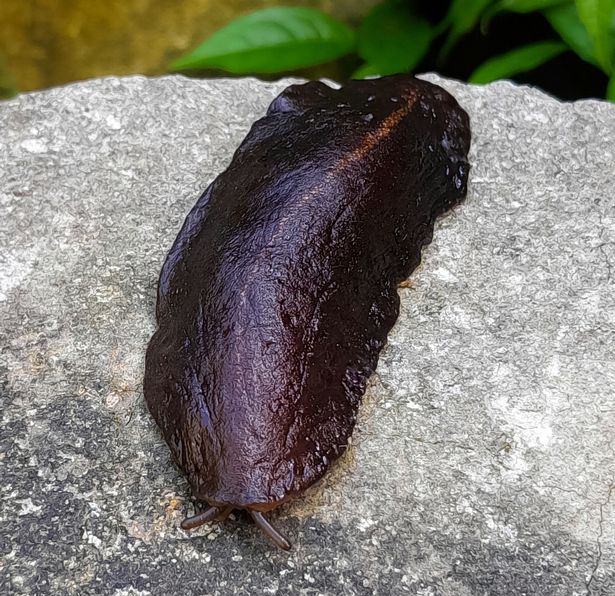The giant slug Laevicaulis alte has been found in the southern region of Tenerife in the Canary Islands with government officials urging people who spot the pest to report it
British tourists have been warned after a Spanish holiday hotspot was invaded by giant slugs.
The urgent safety alert was sounded as scientists fear a giant slug is starting to invade the Canary Islands, a tourist destination favoured by many Brits. It comes after the Canary government noted the presence of the giant slug Laevicaulis alte in the south of Tenerife, a popular are for Brits. The Canary Islands Network for Early Warning of Invasive Alien Species (REDEXOS) of the local government said it is potentially dangerous for agriculture but can also harm humans. At the moment, the slug has only been detected in the south of the island and it has not been ruled out there could be more specimens on other parts of the Canary Islands, which include Lanzarote and Gran Canarias.
“This shell-less slug Laevicaulis alte, known as the giant African slug – which can measure more than 12 centimetres – has managed to expand rapidly thanks to its resistance and ability to adapt,” said a REDEXOS spokesman. “Their presence poses a threat to local ecosystems, as it competes with native species and can affect crops and gardens. In addition, it has been linked to the transmission of parasites that can harm the health of animals and humans.”
Officials have recommended avoiding direct handling of the slug and notifying any sightings to the environment department on each island council. The large slug can weigh more than three grams in adult specimens. The body is dark brown to dark grey, almost black, usually with a pale yellow midband.
Young slugs tend to stay buried in the soil until night but adult ones can go out looking for food during the day. They have become a pest in other countries, including the US.
The development comes as British tourists face a backlash from locals amid complaints of over tourism on the island. Anti mass-tourism protests began on the island last year and have continued with more demonstrations being announced in Tenerife next month.
Protesters are fighting against mass holiday makers infiltrating their towns and have called on locals from neighbouring Canary Islands So far 15 groups have pledged to take part under the umbrella protest platform “The Canary Islands Have a Limit.” A spokesperson for the group claimed the eight islands were “collapsing” under pressure from over tourism and being priced out by “foreign speculators.”
The platform said in a statement: “Today our dependence on tourism is greater than ever, housing is more inaccessible than ever, the levels of poverty and social exclusion keep rising, we’re losing our unique natural heritage in the world at an alarming rate and macro-projects serving foreign speculation continue unabated. We’ve still lacking a true change of model that guarantees a decent future for the people who live in these islands.
“That’s why we’re announcing that, in the month of May, we will take to the streets of Tenerife again and we call on the other seven islands to join us again in this shared mission.”


